
The Multiscale Gaussian Normalization(MGN) technique (Morgan & Druckmuller (2014)) is used to process solar EUV images. This technique aims at revealing information that is hidden in unprocessed EUV images by enhancing small-scale structure and overcoming the problem of revealing information in dark and bright regions simultaneously. It normalizes an image by using a local mean and standard deviation calculated using a Gaussian-weighted sample of local pixels at multiple scales. The final image is a weighted combination of the normalized components and the original gamma-transform image, and is very effective at revealing faint fine-scale details on the disk and off-limb regions.
The MGN software is available for download here, and is compatible with all current distributions of IDL in a SolarSoftware (sswidl) environment. A "read-me" file is also available here.
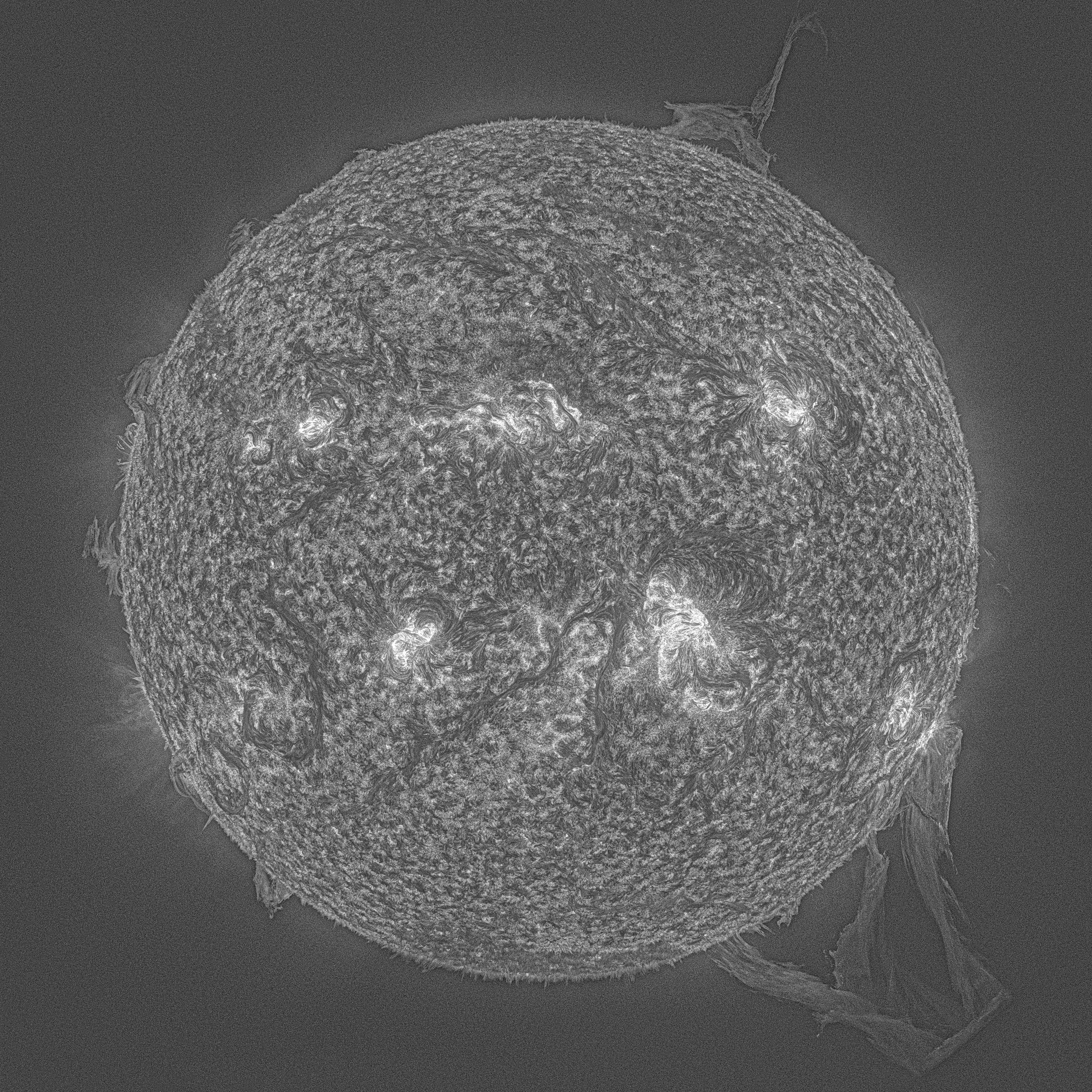

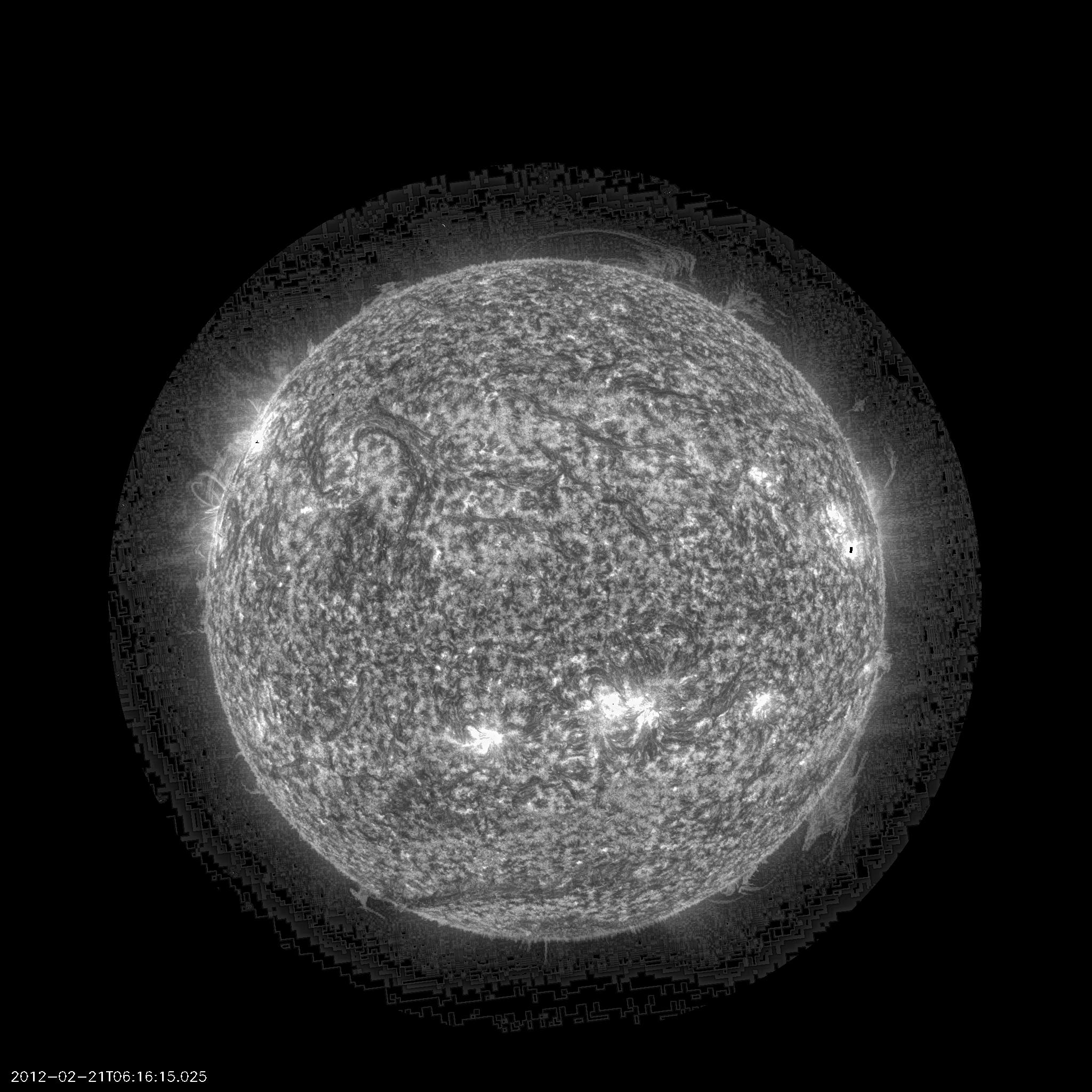

Multi-wavelength solar observations made by AIA/SDO allow us to produce temperature and emission measure maps of the low corona (Leonard & Morgan, 2015). An essential consideration in developing this archive is computational efficiency. The maps are therefore created using an isothermal approximation and this should be a consideration for anyone planning their use for science purposes. The maps are produced from the AIA 'synoptic' data, and have been produced for every 10 or 30 minutes. If you are using these maps for science, please contact the team.
The Dynamic Separation Technique (DST, Morgan, Byrne & Habbal (2012) ) is a new technique based on spatial and time deconvolution of coronagraph data. It is an effective separation of the dynamic and quiescent components of the images. The structure of CMEs are revealed in detail despite the presence of background streamers that are several times brighter than the CME.
The normalized radial graded filter (NRGF, Morgan, Habbal & Woo (2006) ) is a simple filter for removing the radial gradient to reveal coronal structure. Applied to coronagraph data, the NRGF produces images which are striking in their detail.
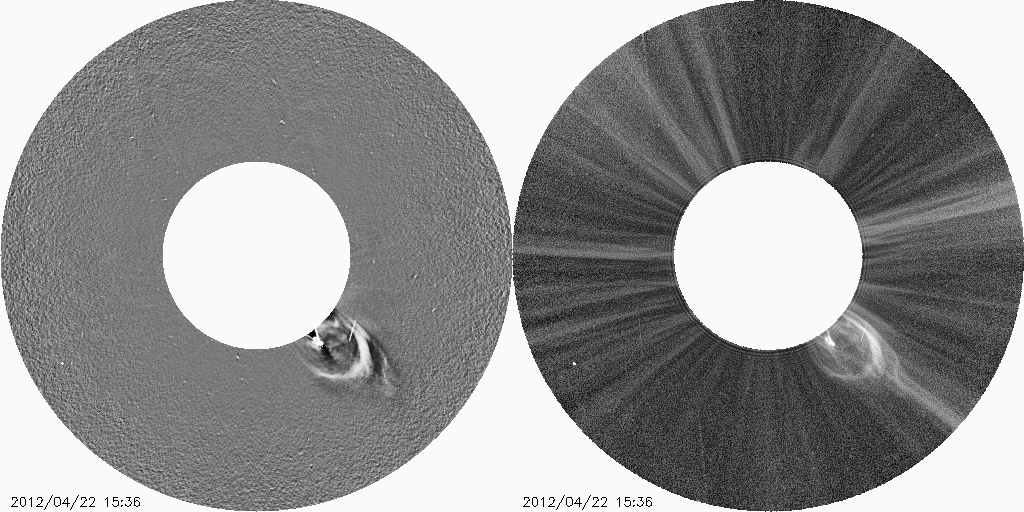
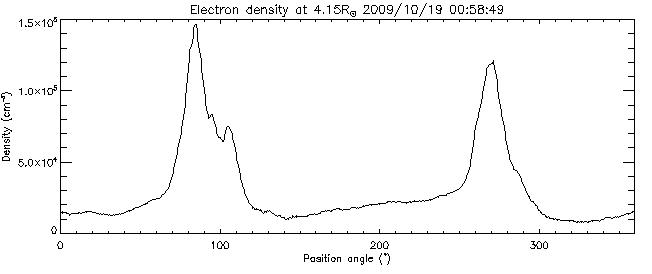
LASCO C2 polarized brightness images are calibrated (using stars) according to the methods of Morgan (2015). These are then inverted, assuming a local spherical symmetry, into an estimate of the coronal electron density. These are IDL save files, containing structures with polar-coordinate arrays of electron density and are available here.

Data processing and calibration is applied to LASCO C2 observations according to the method described in Morgan (2015). The methodology includes noise suppression, background subtraction and conversion of total to K-coronal brightness. These are IDL save files, containing structures with polar-coordinate images and are available here.
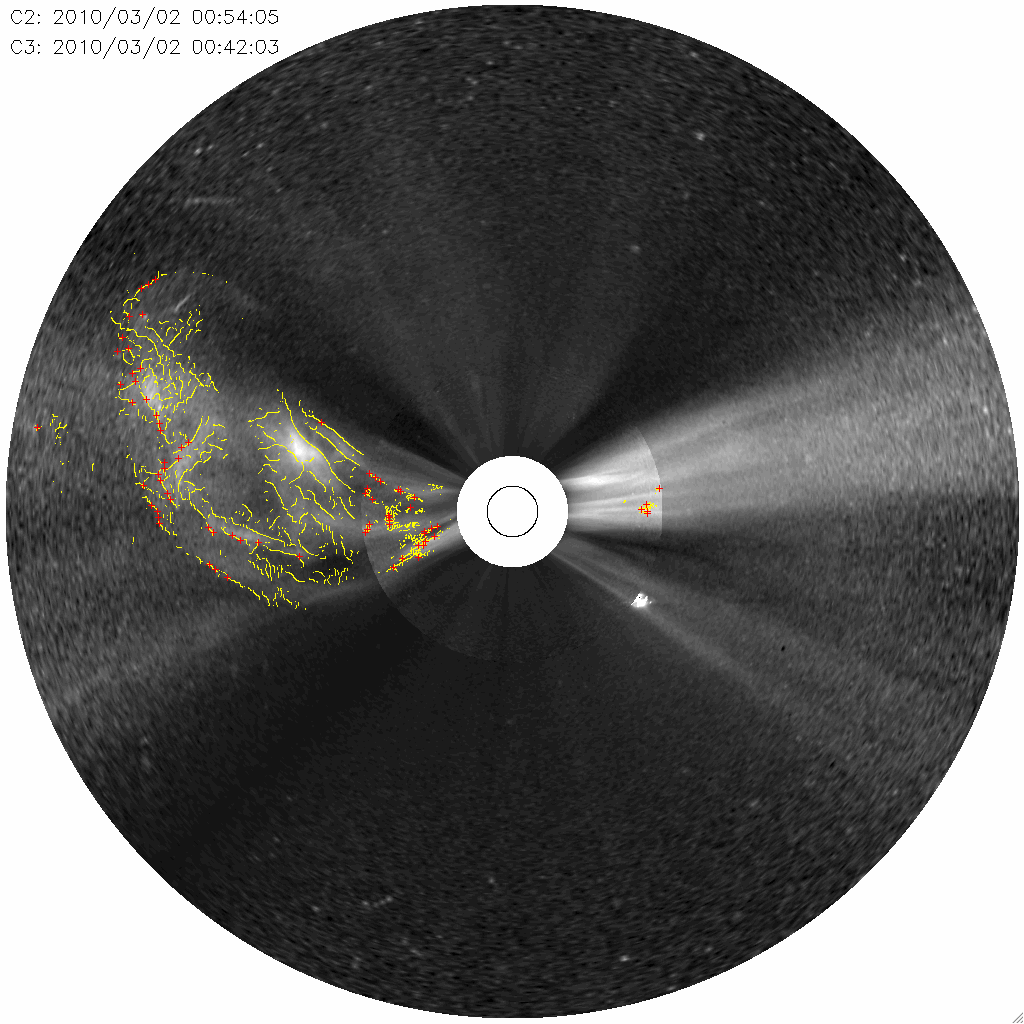
The coronal image processing (CORIMP) CME catalog is generated from the automatic detection and tracking of CMEs in images from the Solar & Heliospheric Observatory Large Angle & Spectrometric Coronograph experiment (SOHO/LASCO). The catalog utilizes a normalizing radial-graded filter (NRGF, see above) that removes the steep gradient in coronal brightness.
A deconvolution technique is used to remove the static background, separating dynamic and quiescent structures. A multiscale decomposition then results in a number of scales upon which the images can be automatically inspected for curvilinear features. Detection masks are generated to isolate CME structure, and a sequence of observations then reveal the changing CME kinematics and morphology.
Details available in the following publications (please cite these two papers if using the catalog):